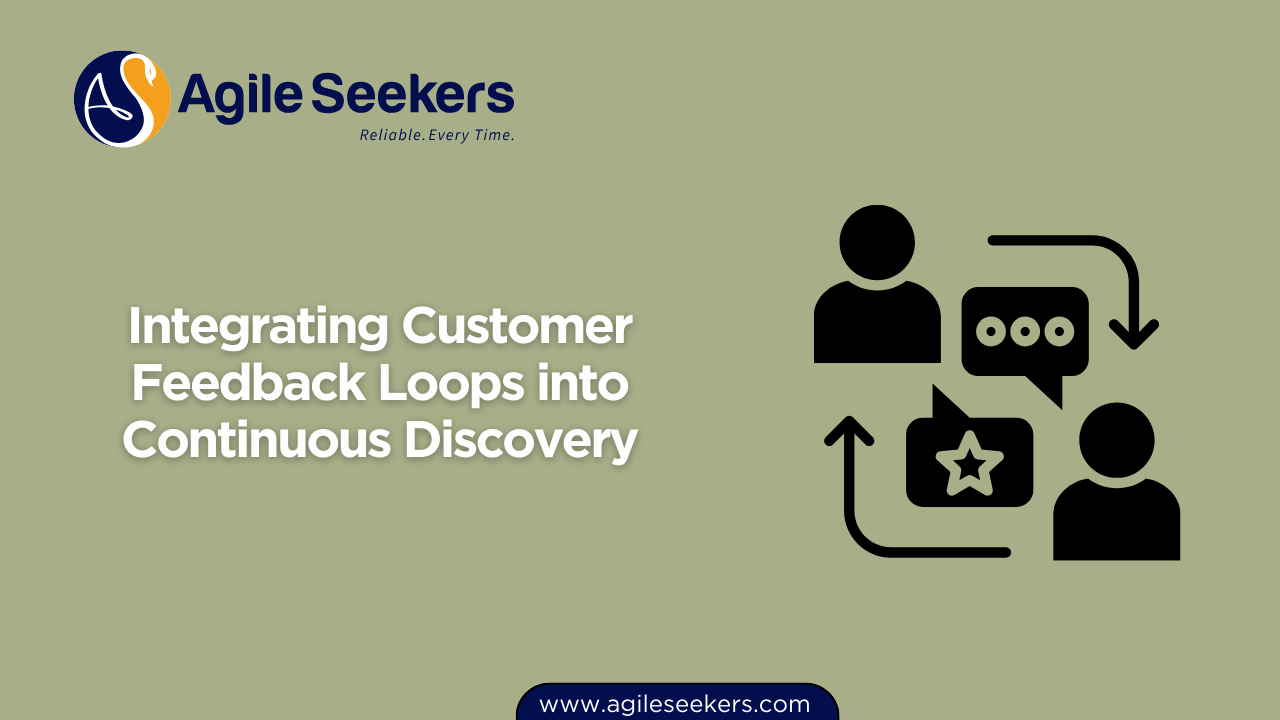Integrating Customer Feedback Loops into Continuous Discovery

Customer-centric teams don’t guess—they listen. In a product environment where market expectations shift quickly, integrating customer feedback loops into continuous discovery is not just helpful; it’s essential. Continuous discovery is the practice of regularly interacting with customers and refining your product based on insights gathered. But it only works if you create structured, reliable mechanisms to gather, interpret, and act on feedback.
What Are Customer Feedback Loops?
A customer feedback loop is a process where input from users is systematically collected and fed back into product decisions. These loops can be short (like quick polls or beta tests) or long (like analyzing longitudinal support ticket trends). The goal is to close the gap between what customers experience and how your product evolves.
For product managers and cross-functional teams, creating effective feedback loops means embedding listening mechanisms directly into the discovery process—not treating them as separate or occasional efforts.
Why Continuous Discovery Needs Feedback Loops
Discovery without validation is risky. Product teams often make assumptions about what users need, leading to misaligned features or irrelevant solutions. Feedback loops reduce this risk. They help teams:
- Validate ideas before investing development effort
- Catch usability issues early
- Identify unmet needs or pain points
- Measure user sentiment over time
When done right, continuous discovery powered by feedback loops leads to solutions that are both user-centered and outcome-driven. This practice is especially critical for those pursuing SAFe POPM certification, where continuous exploration is a cornerstone of lean product management.
Key Elements of an Effective Feedback Loop
To integrate feedback loops into your discovery workflow, focus on three key elements:
1. Consistent Data Collection
Set up multiple channels to gather insights, including:
- In-app surveys (e.g., after completing tasks)
- User interviews (scheduled or ad hoc)
- Support tickets and complaint trends
- Behavioral analytics tools like FullStory or Hotjar
These channels help build a broad, representative dataset across customer segments. Use tagging systems and integrations to pipe qualitative and quantitative data into your product management tools.
2. Synthesis and Prioritization
Raw feedback is only helpful when it's synthesized. Categorize feedback into themes—usability, feature gaps, bugs, unmet needs. Use prioritization matrices or impact-effort frameworks to evaluate what to act on first. This step supports data-driven decision-making, which is critical for PMP certification training practitioners who are trained to manage project value delivery systematically.
3. Visibility and Action
Make sure your feedback insights are visible to key stakeholders. Build dashboards, conduct weekly feedback reviews, or integrate customer quotes into sprint planning. Visibility leads to accountability, and when teams see customer pain points up close, they’re more likely to act on them.
Embedding Feedback Loops into Continuous Discovery Cadence
Continuous discovery requires rhythm. It’s not a one-time research project—it’s a weekly habit. Below is a sample framework for integrating feedback loops into a discovery cadence:
| Timeframe | Activity | Feedback Loop Used |
|---|---|---|
| Weekly | User interviews & usability tests | Direct feedback loop |
| Bi-weekly | Analyze support tickets & feedback logs | Indirect loop (behavior analysis) |
| Monthly | Run NPS & satisfaction surveys | Quantitative sentiment loop |
| Quarterly | Feedback synthesis + roadmap updates | Strategic alignment loop |
Using Feedback to Drive Hypotheses
Discovery is driven by learning loops. Each piece of feedback should inform a product hypothesis. For example:
"Several users dropped off during onboarding—can simplifying the first-time experience reduce churn?"
Turn feedback into testable hypotheses, and then run small experiments. This method is widely used in modern agile teams and aligns with principles taught in SAFe Product Owner/Manager certification.
Tools That Help Automate Feedback Integration
Here are some product and analytics tools that help gather and loop feedback seamlessly:
- Hotjar: Visual heatmaps and session recordings
- Intercom / Zendesk: Ticket categorization and customer tagging
- Typeform / SurveyMonkey: Custom surveys and sentiment scoring
- Productboard: Feedback management and roadmap linking
These platforms enable faster learning cycles and keep your discovery pipeline active. Integrating tools with your sprint rituals ensures that customer feedback doesn’t sit idle—it gets translated into backlog items or strategic features.
Challenges to Anticipate
Even the most dedicated teams face challenges while maintaining effective feedback loops:
- Feedback fatigue: Users may disengage if over-surveyed
- Confirmation bias: Teams might favor data that supports pre-existing beliefs
- Lack of follow-through: Feedback is gathered but not actioned
- Poor cross-team sharing: Insights remain siloed within product teams
Overcoming these challenges requires discipline and cultural alignment. Use structured ceremonies to revisit insights regularly, and assign owners for feedback categories to ensure accountability.
Closing the Loop: Let Customers Know
A closed feedback loop means telling users what changed because of their input. Simple messages like “We updated our dashboard based on your suggestions” go a long way in building loyalty. This communication cycle enhances trust and encourages continued participation in feedback programs.
Conclusion
Integrating customer feedback loops into continuous discovery helps teams make smarter, user-validated decisions. It builds a culture of learning, minimizes product risk, and ensures you're solving real problems—not assumed ones. Whether you're a product owner practicing lean discovery or a project manager following PMP training principles, a robust feedback system transforms how decisions are made.
Adopting this practice positions your team to deliver meaningful value faster—and more consistently.
Also read - Leveraging Product Usage Heatmaps for UX Improvements
Also see - Creating and Managing Technical Product Requirement Documents (PRDs)




















